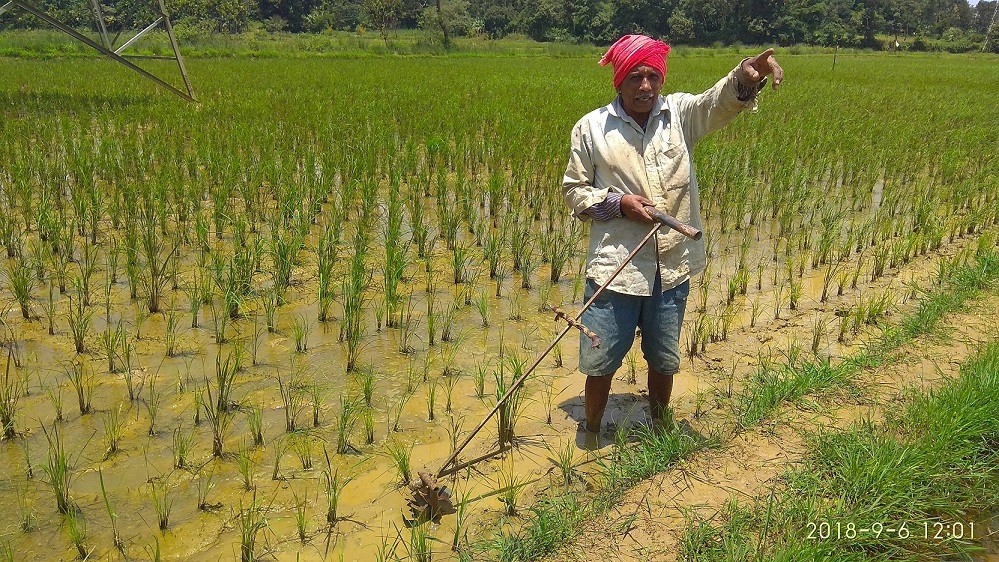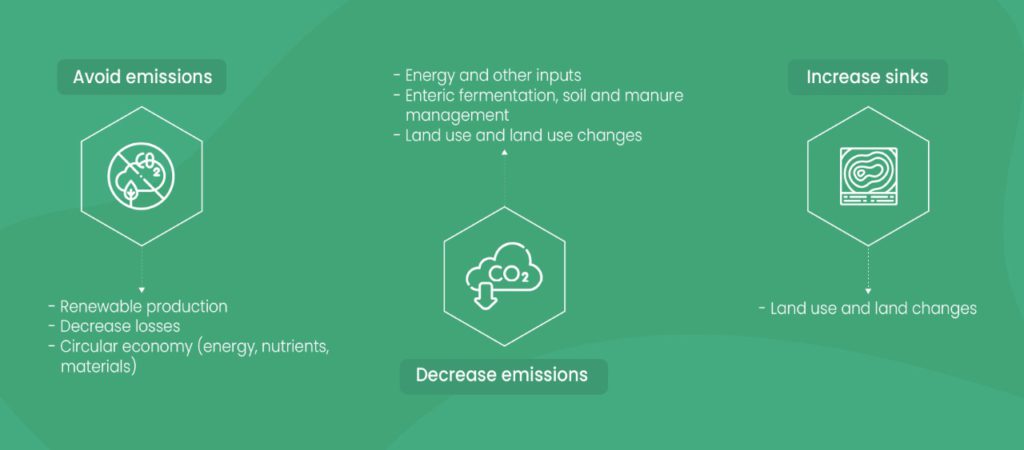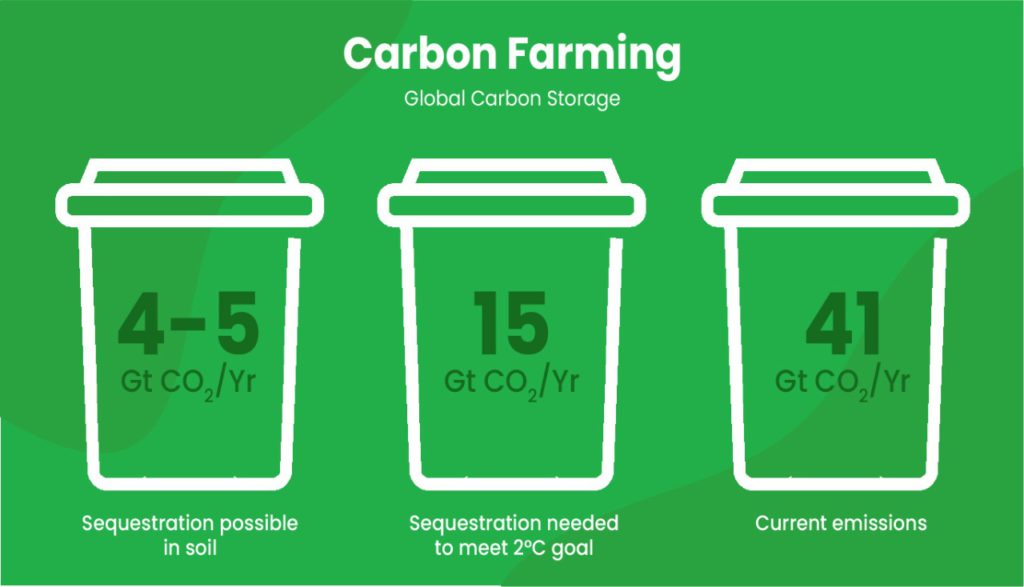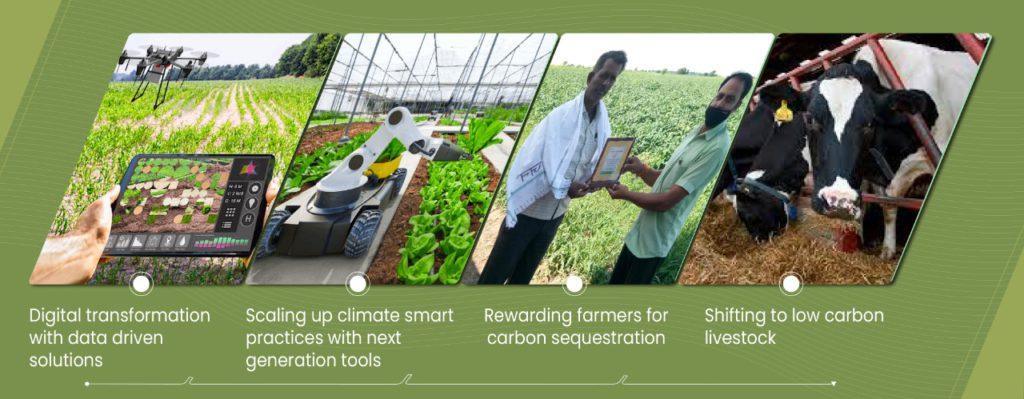Contact: +91 99725 24322 |
Menu
Menu
Quick summary: Explore the transformative potential of carbon-neutral farming practices in our latest blog. Discover the challenges, benefits, and technological solutions driving sustainable agriculture forward. Dive into the world of carbon-neutral farming and learn how innovative approaches are reshaping the future of food production.

Carbon neutral farming is a transformative approach that revolutionizes traditional agricultural practices by prioritizing environmental stewardship and sustainability. At its core, carbon neutral farming seeks to balance the emission of greenhouse gases with their removal from the atmosphere, resulting in a net-zero carbon footprint.
According to BIS Research, ” It is crucial to establish a comprehensive strategy that integrates carbon neutral farming practices throughout the entire agricultural value chain in order to reduce greenhouse gas emissions in agriculture. This means using precise irrigation techniques, embracing the use of renewable energy sources, and putting sustainable land management practices into practice.”
By implementing innovative techniques and leveraging cutting-edge technologies, carbon neutral farming not only mitigates the impacts of climate change but also enhances soil health, biodiversity, and overall ecosystem resilience. Join us on a journey to explore the principles, strategies, and benefits of carbon neutral farming, as we delve into the forefront of sustainable agriculture and pave the way towards a greener future for our planet.
What is Carbon Neutrality?
Carbon Neutrality is the first step in a company’s journey to net-zero emissions. Businesses need to reduce or avoid emissions before they are created, reducing the need for carbon offsets. Carbon neutrality is when a company or individual emits and absorbs the same amount of carbon dioxide from the atmosphere. According to the European Parliament, carbon neutrality is reached when the same amount of carbon dioxide is released into the atmosphere as is removed by various means, leaving a zero balance. This is also referred to as the zero-carbon footprint. Carbon footprint is nothing, but the total greenhouse gas emissions caused by an individual, organization, service or product. In other words, a company isn’t contributing to carbon footprint as they ensure to offset all their emissions.
What do Carbon Neutral Farms look like?
Significant transformations often originate from farms of modest size but boundless ambition. Over the past eight decades, advancements in agriculture have enabled farmers to achieve equivalent food production on increasingly compact parcels of land. For contemporary row-crop farmers, this equates to harvesting over six times more corn per acre than in 1940. Referred to as “sustainable intensification” by experts, this method is crucial for nourishing a burgeoning global populace while safeguarding Earth’s finite resources. By maximizing yields on limited land, there’s reduced pressure to encroach upon other ecosystems, such as forests, which serve as vital natural carbon reservoirs.
Carbon-neutral farms represent a pioneering approach to agriculture, where every aspect of farm operations is meticulously optimized to minimize carbon emissions and maximize carbon sequestration.
These farms employ a variety of practices, including precision agriculture techniques to optimize fertilizer and water usage, crop rotation strategies to enhance soil health and carbon storage, and agroforestry systems that integrate trees into crop and livestock production. Additionally, renewable energy sources like solar panels and wind turbines power farm operations, while innovative technologies such as methane digesters capture and repurpose greenhouse gas emissions from livestock. By adopting these sustainable practices, carbon-neutral farms not only mitigate their environmental impact but also contribute to the restoration of ecosystems and biodiversity, ensuring a healthier and more resilient agricultural landscape for future generations.
The IPCC experts claim that it is possible to reach carbon neutrality by 2050 and limit the global warming to 1.5˚C but this would require both social and political changes.

Carbon Neutral farming for Climate Change
Agriculture sector has a dual role in the decarbonizing economy with agriculture being both a source and a sink for GHGs and there is a need for agricultural transformation.
Agrifood system emissions account for an estimated 21 to 37 % of total anthropogenic GHG emissions.
The climate changes affect all the stakeholders from the farmers, manufacturers and the end consumers in different ways. The rising temperatures, rainfall patterns, supply chain disruptions impact food production threatening the hunger crisis.
Carbon-neutral farming is emerging as a crucial strategy in the fight against climate change. With agriculture being a significant contributor to greenhouse gas emissions, carbon-neutral farming practices aim to minimize the carbon footprint of agricultural operations while also sequestering carbon from the atmosphere. This approach involves implementing sustainable practices such as precision agriculture, agroforestry, cover cropping, and rotational grazing, which not only reduce emissions but also enhance soil health and biodiversity. By adopting these techniques, farms can effectively offset their carbon emissions, making a substantial contribution to mitigating climate change. Furthermore, carbon-neutral farming holds the potential to transform agricultural landscapes into carbon sinks, helping to restore balance to Earth’s carbon cycle and safeguarding the planet for future generations.
What does Carbon Neutral Agriculture entail?

Carbon Farming Practices

Carbon farming is a whole farm approach to optimize carbon capture by implementing practices that removes carbon dioxide from the atmosphere and stores it in the plant or the soil organic matter
The practices normally adopted to sequester carbon and improve soil health are:
These practices can be used in combination or applied one at a time.
Discover the secrets to sustainable farming success!
Dive into the best practices in sustainable agriculture

Benefits of Carbon Neutral Farming
Carbon farming delivers benefits to both farmers and society and also enhances soil health, biodiversity and animal welfare. It improves farmer resilience with increase in productivity at reduced costs. The major challenges to scale up carbon farming exists in accurate monitoring, reporting and verification and Impermanence. The carbon sequestered can be intentionally or unintentionally released back into the atmosphere that undo’s the benefits of carbon farming.
What are the Challenges in Carbon Neutral Farming?
Carbon neutral farming, while promising, faces several challenges on the path to widespread adoption.
Despite these obstacles, innovative solutions and increased support and education can help overcome these challenges and accelerate the adoption of carbon-neutral farming practices.
Technology Solutions for Carbon Neutral farming
Technology solutions play a crucial role in advancing carbon-neutral farming practices by providing innovative tools and methods to mitigate greenhouse gas emissions and enhance carbon sequestration. These solutions can help farmers monitor and optimize various aspects of their operations to reduce their carbon footprint while maintaining or even improving productivity.
One way technology aids in carbon-neutral farming is through precision agriculture techniques, such as the use of sensors, drones, and satellite imagery, which enable farmers to precisely manage inputs like water, fertilizers, and pesticides. By applying these inputs only where and when needed, farmers can minimize waste and reduce emissions associated with conventional farming practices.
Furthermore, advanced farming equipment and machinery powered by renewable energy sources, such as solar or electric tractors, can help reduce reliance on fossil fuels and lower emissions from agricultural activities. Additionally, the adoption of regenerative agriculture practices, facilitated by digital farm management software, can promote soil health and increase carbon sequestration in agricultural soils.
Moreover, technology-enabled carbon accounting and monitoring platforms allow farmers to accurately measure, report, and verify their carbon emissions and sequestration efforts. These platforms provide valuable insights into the effectiveness of different management practices and enable farmers to participate in carbon offset markets or other incentive programs.

TraceX Solutions for Carbon Neutral farming
The integration of TraceX farm management solutions with the Digital MRV platform offers farmers a holistic approach to carbon-neutral farming. By leveraging data-driven insights, precision agriculture techniques, and robust carbon accounting capabilities, farmers can effectively address the challenges of climate change mitigation while promoting sustainable and resilient agricultural systems.
Data Driven Insights
TraceX farm management solutions collect and analyze data on various aspects of farm operations, such as crop yields, soil health, and input usage. This data, when integrated with the Digital MRV platform, provides farmers with comprehensive insights into their carbon footprint and the effectiveness of different management practices in reducing emissions and sequestering carbon.
Precision Agriculture
TraceX enables precision agriculture techniques, allowing farmers to optimize inputs like water, fertilizers, and pesticides. By combining this capability with the Digital MRV platform’s monitoring and reporting functionalities, farmers can track the environmental impact of their input decisions and make adjustments to minimize emissions while maintaining productivity.
Carbon Accounting and Reporting
The Digital MRV platform facilitates accurate carbon accounting and reporting by capturing data on emissions sources and sinks across the farm. TraceX seamlessly integrates with this platform to provide real-time data on carbon sequestration through practices like cover cropping, reduced tillage, and agroforestry. This enables farmers to quantify their carbon footprint and track progress towards carbon-neutral farming goals.
Compliance and Certification
TraceX and the Digital MRV platform help farmers comply with carbon reporting requirements and achieve certification under carbon offset programs or sustainability standards. By documenting their carbon reduction efforts and verifying their environmental performance, farmers can access carbon markets and premium markets for sustainably produced agricultural products.
Streamline your carbon-neutral farming journey and drive sustainability in agriculture.
Ready to take your farm management to the next level with TraceX Digital MRV solutions?
Conclusion
In conclusion, carbon-neutral farming represents a critical pathway towards mitigating climate change and building resilient agricultural systems for the future. By adopting innovative technologies, implementing sustainable practices, and embracing a holistic approach to carbon management, farmers can play a pivotal role in reducing greenhouse gas emissions, sequestering carbon, and enhancing ecosystem health. Together, we can cultivate a future where agriculture not only feeds the world but also contributes to a healthier, more sustainable environment for generations to come.
